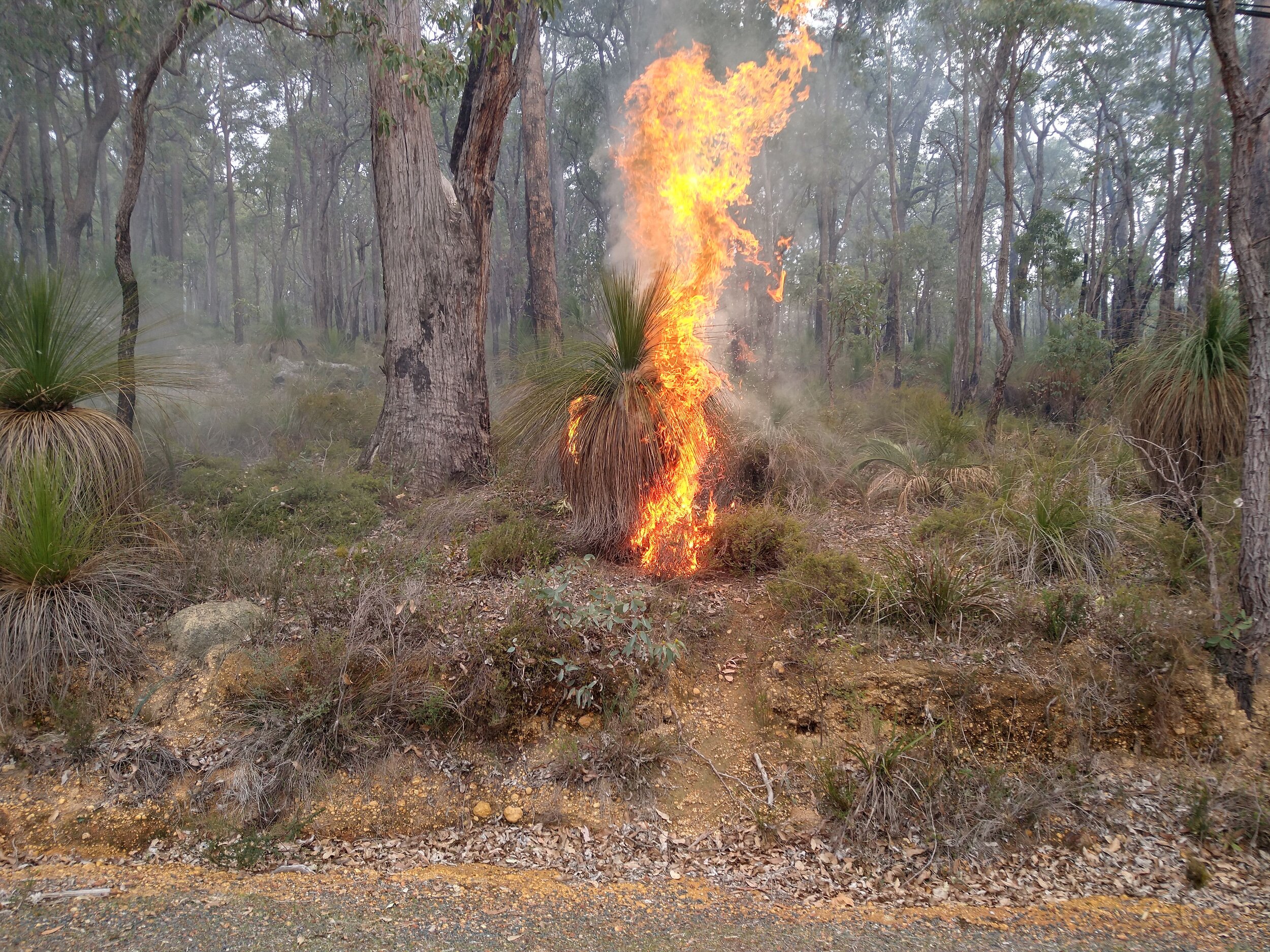
Flammability information on over 500 plants
A new book to help gardeners navigate our increasingly flammable world
Destructive bushfires are increasing in frequency & intensity around the world. For people living in fire prone areas there are no reliable guides about which plants have low flammability and which are frighteningly flammable. ‘Safer Gardens Plant Flammability & Planning for Fire’ is that guide, with over 500 plants assessed, based on fire research from around the world.
Readers can look up a plant in the Plant Flammability Table to get an idea of its flammability then turn to the A-Z for more detailed information. The book contains advice about ways to create a more firesafe garden, including the need to carefully manage the use of mulch and hedges.
This is citizen science, written by a gardener for other gardeners. Complex and potentially confusing science is made comprehensible and usable, to help you make your garden and hence your house safer.
Reliable guide for people living in fire prone areas
Science-based information about a plant’s flammability
Fire research from around the world
Information about firewise ways to lay out your garden
Read reviews of the book and listen to podcasts here
Stockists
For information on where to buy the paperback or eBook in Australia or overseas click here.
“Of course, all plants will burn in the right conditions, but it is equally the case that some plants burn far more readily than others.”
How firesafe is your garden & home?
Firefighters often have to make hard decisions about whether a house can be defended or must be abandoned to the flames. A home with flammable trees hanging over its roof, a garden full of dead material, and poor fire-truck access is unlikely to be one they can defend without putting their own lives at risk.
There is a lot you can do to make your home one of the ones firefighters believe they can save. Even something simple like branches overhanging your driveway can prevent firefighters from accessing it. Many fire trucks are very large vehicles and need a wide driveway with a 4m height clearance in order to access your home.
Picture by Pixabay courtesy of Pexels.
Did you know that many fire retardant plant lists include plants that fire scientists have found to be flammable?
Lesley Corbett, the author of ‘Safer Gardens’, is a West Australian gardener who lives close to State forest. For years she chose plants for her garden based on ‘fire retardant’ plant lists, but then she discovered that some plants on these lists are in fact very flammable. Most of the lists didn’t provide references for their plant flammability rankings, so she went looking for evidence-based information. She searched far and wide, gathering research papers about plant flammability from around the world, as well as documents from well referenced, reputable sources such as government forestry services. This book is the result of that research. Sources include papers from New Zealand, Australia, Brazil, various parts of the USA, South Africa, Turkey, Algeria and many Mediterranean countries. All sources are referenced in the book, and many of them are referenced here.
‘Safer Gardens’ contains exotic plants from all around the world as well as many Australian natives.
Here are some examples of plants that are on low flammability lists but which research indicates have high flammability:
Cork oak (Quercus suber)
Spanish lavender (Lavandula stoechas)
Silver banksia (Banksia marginata)
Silver birch (Betula pendula)
Spotted gum (Corymbia maculata/Eucalyptus maculata)
Case studies
Spanish lavender
Spanish lavender (Lavandula stoechas) is sometimes included on low flammability lists. However according to research, the green leaves are very flammable (Henaoui et al. 2013). Their moisture content in spring was found to be low. The leaves are aromatic and contain essential oils. Spanish lavender readily spreads from gardens into nearby bushland in many parts of Australia.
Spanish lavender (Lavandula stoechas) growing wild in Ceuta, Spain. Picture by Xemenendura courtesy of Wikipedia.
English lavender
Tests on English lavender (Lavandula angustifolia) indicate it has low flammability (Sheridan 1996). However like most lavenders it is short lived and becomes woody and increasingly flammable with age. The moisture content of green leaves tested in Tasmania in summer was fairly high. The leaves are aromatic and contain essential oils. It may be a useful plant to grow if you are prepared to remove it when it becomes woody.
Common lavender (Lavandula angustifolia) in a French garden. Picture by JLPC courtesy of Wikipedia.
Spotted gum
Spotted gum (Corymbia maculata) quite often appears on low flammability lists but research indicates both its fresh and its dry leaves have high flammability (Bellamy 1988). It is a smooth barked gum which means its trunk is not as flammable as gums with rough bark or with bark that sheds in long strips. It sheds its bark in summer in small pieces. It used to be known as Eucalyptus maculata.
Corymbia maculata (cultivated) Burnley Gardens, Burnley, Victoria, Australia. Picture by Melburnian courtesy of Wikipedia.
Learn more about all the plants in the book

Want to know more?
Learn how to structure and maintain your garden so that it has a better chance of surviving a wildfire





